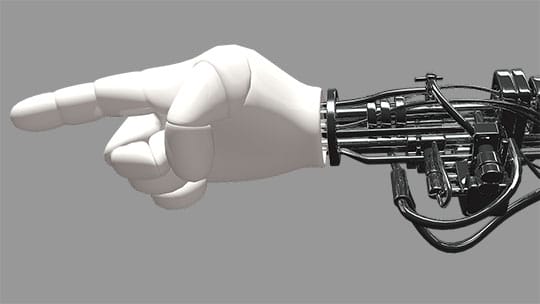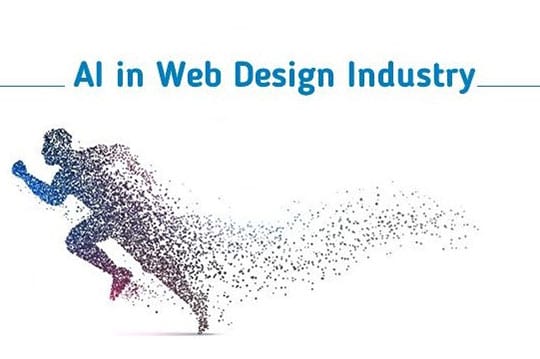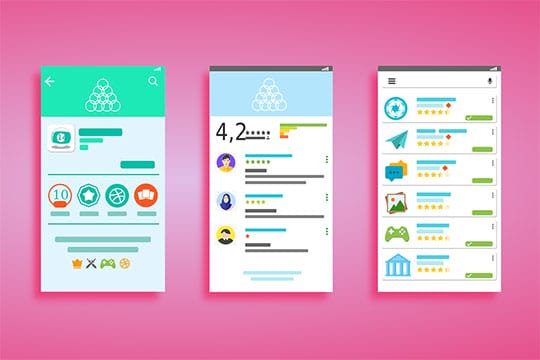Artificial intelligence is booming! It won’t be surprising to say that AI gets the most out of data and is helping increase efficiencies and productivity at the workplace. Today, artificial intelligence is not just a marketing feature; it has entered the mainstream business. The buzz created by artificial intelligence is spreading across industries and changing the way businesses are being carried out. It is not only changing workflow management but also making its way into everyday operations for predicting future trends and providing new opportunities.
Defining Artificial Intelligence (AI)
AI is an advanced computerized system that uses the concept of machines accomplishing tasks that earlier required human intelligence. It is an advanced human, like a computerized system, that intelligently manages activities and tasks which was manually done by humans. Thus, with AI it is possible to design machines that complete any task that required human intervention earlier.
The key driver of this revolution is its development using open source software thus allowing anybody to create sophisticated models. It is a combination of several developing technologies like augmented reality, machine learning, chats bots, virtual reality, deep learning and more. It covers anything that involves infusing intelligence into devices or machines. AI is capable of discovering patterns in human behavior using algorithms and generates insights based on the data collected.

The fascination with AI has caught everyone across industries. Mark Zuckerberg has taken a New Year Resolution in 2016 to build a simple bot that could help with household tasks. Right from the Amazon delivery drones to self-driving card by Uber, AI is bringing the robotic revolution. Other popular examples of AI are bots like Amazon Echo or Apple Siri that are programmed to take mundane tasks from the regular life of people.
Artificial intelligence is helping organizations with –
- Improving the experience of customers.
- Increasing efficiency of the manufacturing process.
- Managing and analyzing data.
- Predicting performance.
- Improving efforts for advertising and marketing.
- Deciphering the intent of people based on their past behavior.
- Handling explosion of data with growing smartphones and devices.
- Improving the overall user interface experience of customers.
Recommended for you: 7 Modern Web Design Techniques to Follow in 2019.
Role of AI in UX & UI Design

AI is impacting real-life scenarios in the design world too, but does it mean that robots are replacing designers? Well, of course not! In fact, AI is expected to become an indispensable tool in the User Experience designer kit.
To understand the role of AI in the world of UI and UX, it is important to rise above the hype created by artificial intelligence. It is the beginning of a new era, where AI systems are being used to create a deeper connection between audiences and brands.
The present and future role of AI in Design includes –
- Development of AI has led to the development of tools that help designers create appealing designs in lesser time. As AI analyses data, it can easily refine what exactly the user is looking for and also refine the design of products based on other successful products. AI also helps by suggesting completely new design alternatives and how they would improve user engagement.
- In the digital world, personalization is the key to creating unique user experiences. AI is helping designers build personalized eCommerce websites by using information present in the profile of the buyers and other billion data points.
- With the analysis of the large volume of data using AI, it is possible for designers to design high performing products. It also takes into account the latest standards and conventions, UX design best practices and other usability metrics.
- Artificial intelligence can also be used to create unique variations of landing pages and homepages for media brands, news sites and more.
- Every designer’s job involves legwork to an extent. Artificial intelligence can be used to automate the legwork and help designers become more efficient in their work. Tools like Adobe Scene Stitch are an example of how AI can be used to complete legwork tasks. It can identify a pattern in an image and assist designers in editing or patching the patterns.
- AI tools like Prisma are being used to create generative visual styles. It works on a technology that identifies what photograph contains and what is the best visual effect that can be applied to it. This is done using an image recognition technology. Another example of the generative style is the use of AI for dynamic logos.
The Next Wave in Design – DesOps

DesOps has been inspired by the DevOps and refers to a new approach in design. With design gaining high recognition across industries and entrepreneurs, concepts like DesignOps are working to create a synergy between innovative design and AGILE approach to software development. This process strikes a balance between scalability and automation in software.
To understand the concept of DesOps, people often refer to DevOps. The underlying goals and philosophies of both these concepts are the same. DesOps practices came from the dire need to scale designs and it is useful for teams looking to increase their overall value in an organization. It also works in complement to DevOps and focuses on the creation, maintenance, and sharing of the modular system in software design.
Presence of widget libraries and UI patterns further help in bringing consistency. Another benefit of DesOps is that it helps in reducing friction regarding design between teams and eliminate aspects that may involve inefficiencies in operation.
As design practices are diverse and innovative, the challenge lies in ensuring smooth integration between DesOps and DevOps.
Case Study – Airbnb
 Airbnb is home to more than 5 million product listings along with other experiences like hikes, tours and more. The way Airbnb has used AI in their data-driven culture, they are considered to revolutionize the hospitality industry. They do not use just one AI system but have developed a sound ecosystem of different algorithms.
Airbnb is home to more than 5 million product listings along with other experiences like hikes, tours and more. The way Airbnb has used AI in their data-driven culture, they are considered to revolutionize the hospitality industry. They do not use just one AI system but have developed a sound ecosystem of different algorithms.
It is said that the design team at Airbnb got inspiration from the DevOps movement. They assessed a gap between design and engineering at most of the established technology companies. Their design team came up with an open-source React-Sketch app library.
Airbnb uses an AI tool Price Tips that ensures prices are calculated on a demand-supply model. This tool works on an algorithm that utilizes a massive amount of data received by Airbnb. It considers a number of factors to automate price calculation making the process more transparent and intuitive.
Airbnb also has an in-house AI system with machine learning. It turns sketches of design into product source code, while ML translates rating and reviews into the native language of guests.
Case Study – Netflix
 Netflix has become synonymous with online streaming and has introduced the world to digital entertainment. But not many know that it is also considered to be a strong example of ML and UX. The level of personalization offered by Netflix surpasses the experience provided by its competitors.
Netflix has become synonymous with online streaming and has introduced the world to digital entertainment. But not many know that it is also considered to be a strong example of ML and UX. The level of personalization offered by Netflix surpasses the experience provided by its competitors.
It can predict from the user behavior what kind of TV movie or show will keep their user engaged. The entire user experience is adapted to each individual subscriber with an ongoing personalization experience process called consumer science. It is stated that 80 percent of the shows/movies a user watches on Netflix is generated by their recommendation system. They follow an NRT (Near Real-Time) recommendation process.
Netflix has managed to keep its subscriber base growing each year. The platform is disrupting the online streaming industry by providing a high level of customized experiences to its customers. It wouldn’t be wrong to say that Netflix knows what people want before they do. Netflix also uses machine learning for the creation of artwork. There is an algorithm that scans show and picks out images to be shown among the subscriber communities.
You may also like: 7 Occupations Irreplaceable by Artificial Intelligence (AI).
Final Words

As AI and its integration in the design are still in its initial stage, a lot of changes can be expected in the coming years. Designers need to understand how to create a tradeoff between functionality and design. Though it is tough to strike a balance, it is critical to ensure the most efficient use of AI. Designers should focus on creating meaningful patterns rather than overwhelming the user with lots of data.
Another challenge that needs to be addressed is to translate the language of developers into the one used in conversation by users. Instead of showing labels in the language of the developers, it is important to interpret them and communicate in an understandable way.
Before jumping into AI, it is critical to understand your expectations and how you expect AI to fulfill them. With consumers coming across more intelligent systems each day, they will surely demand more capable and efficient products in coming time.





